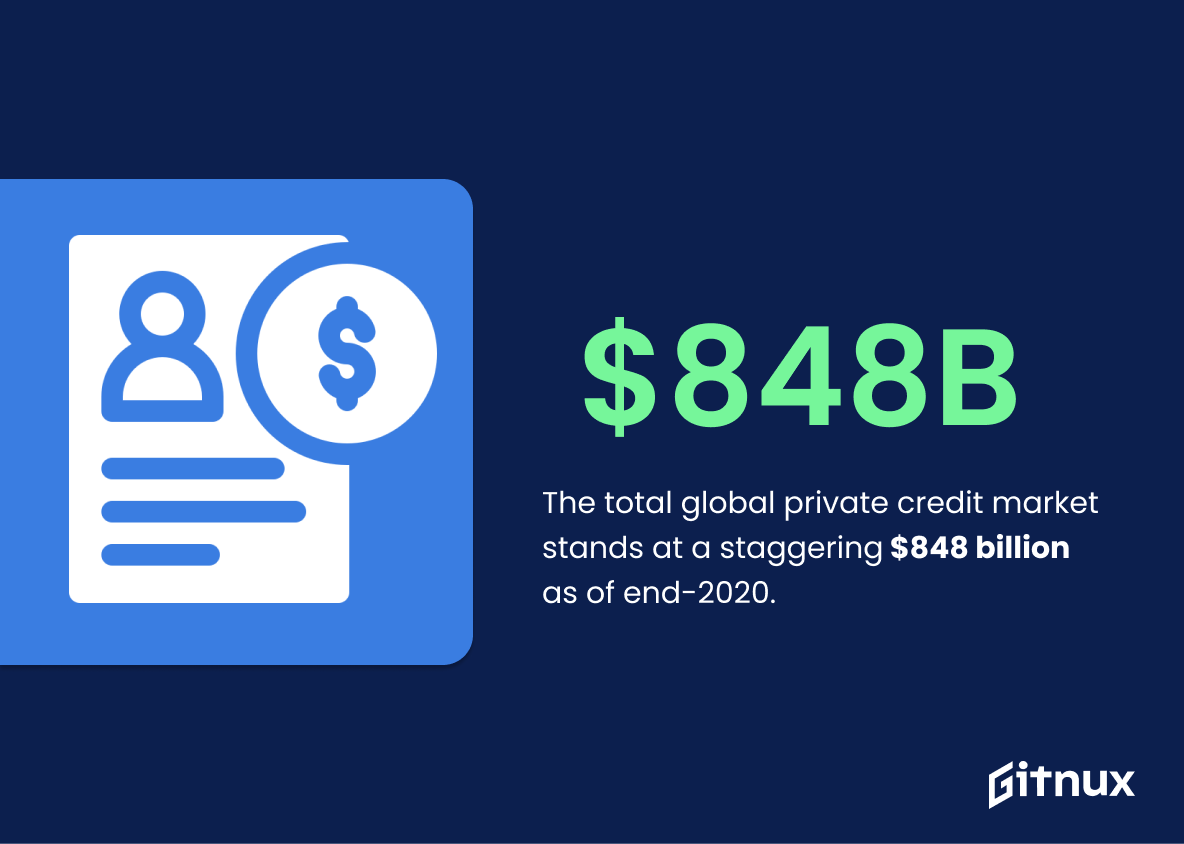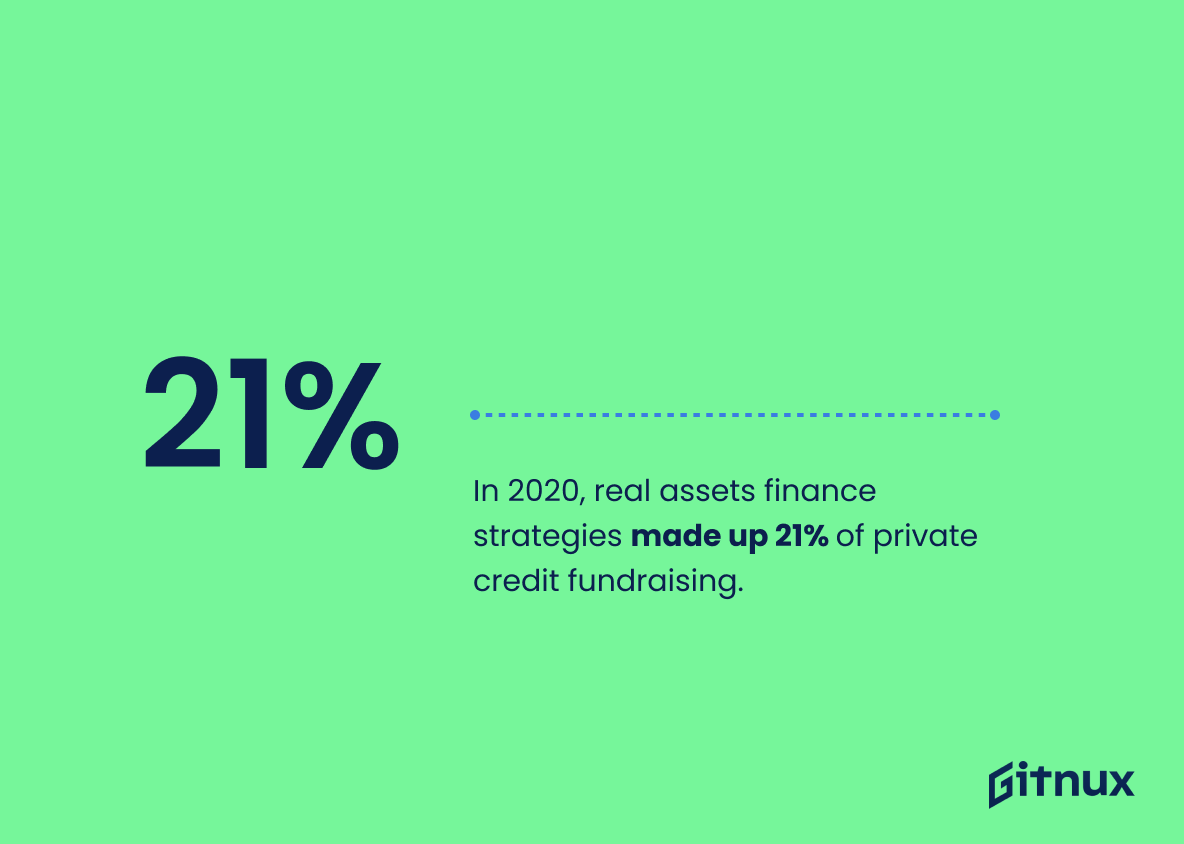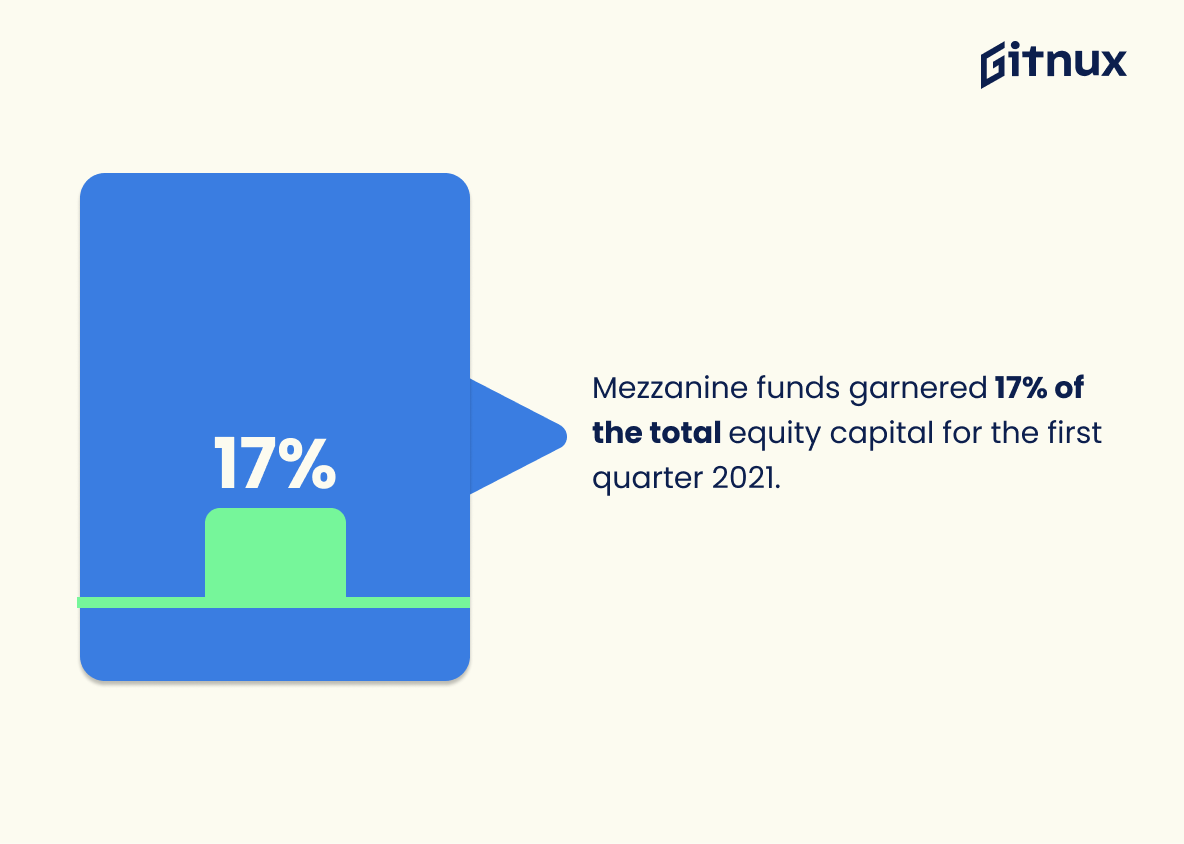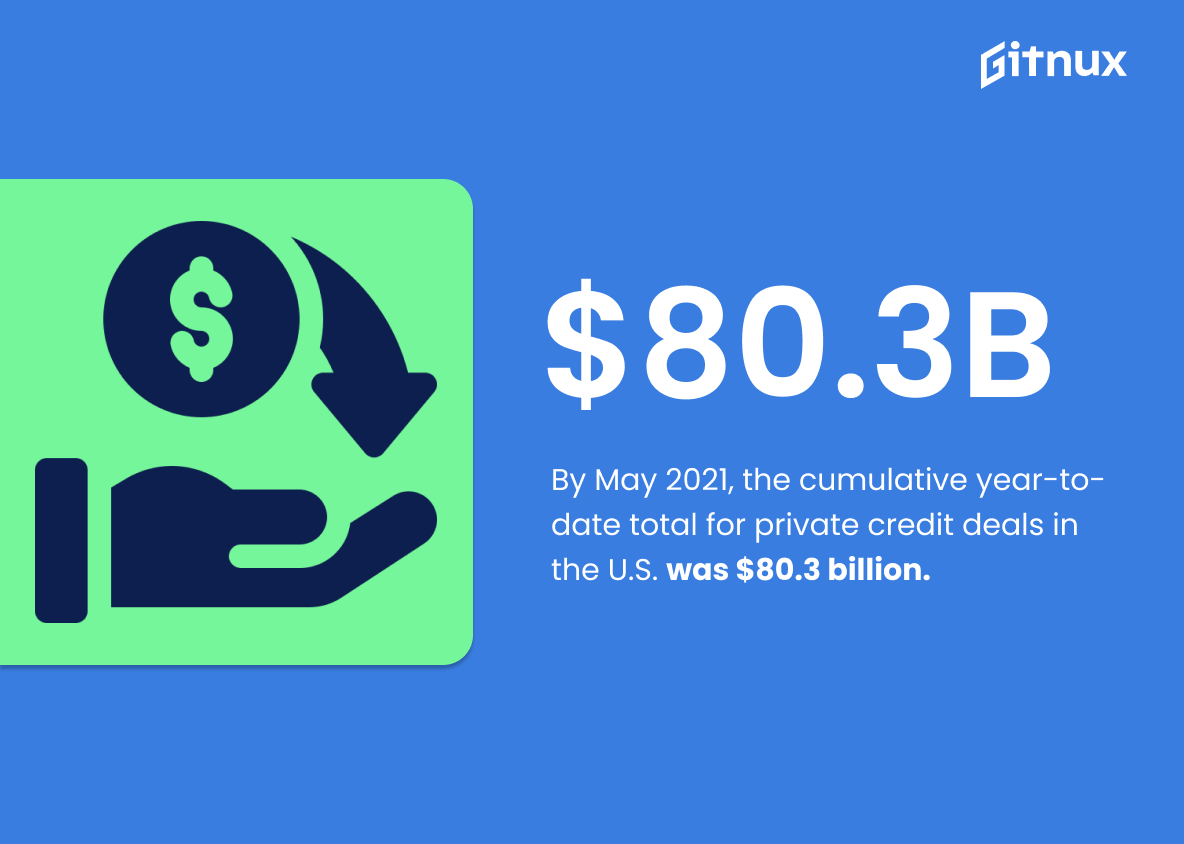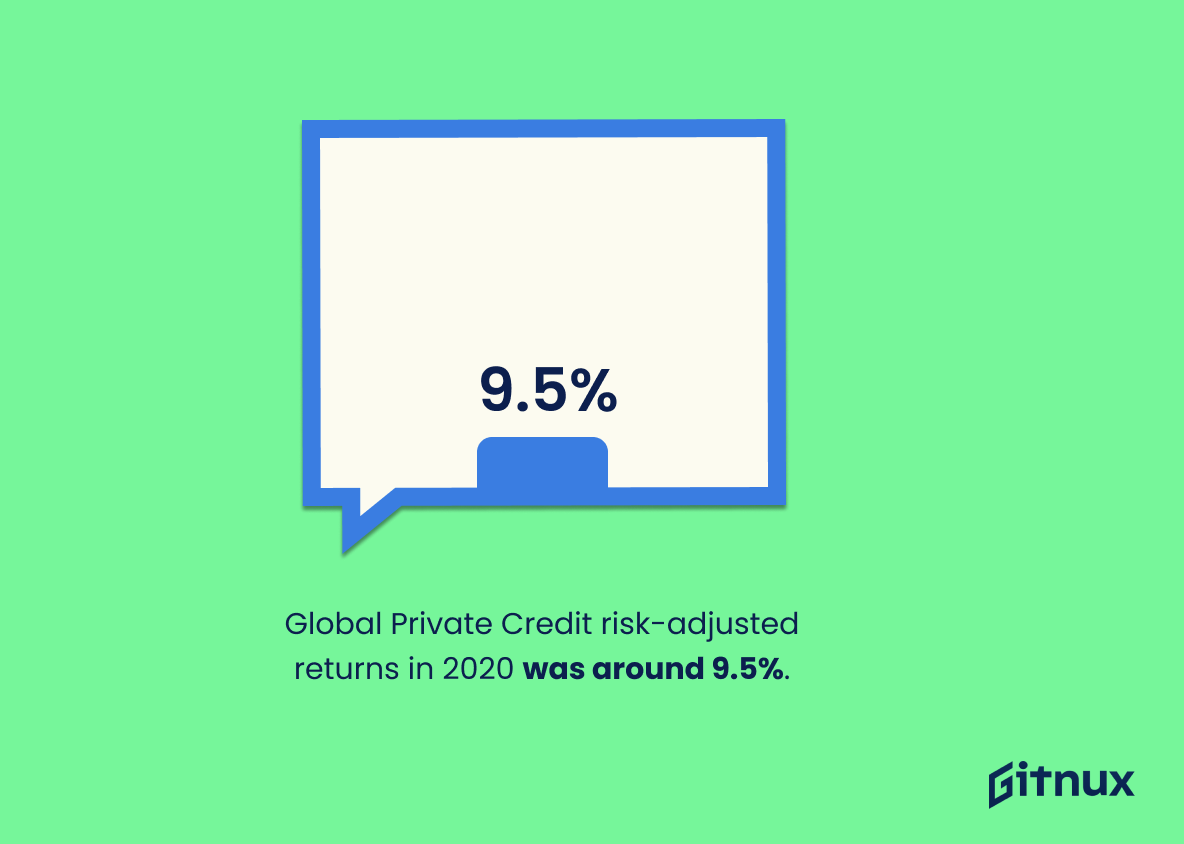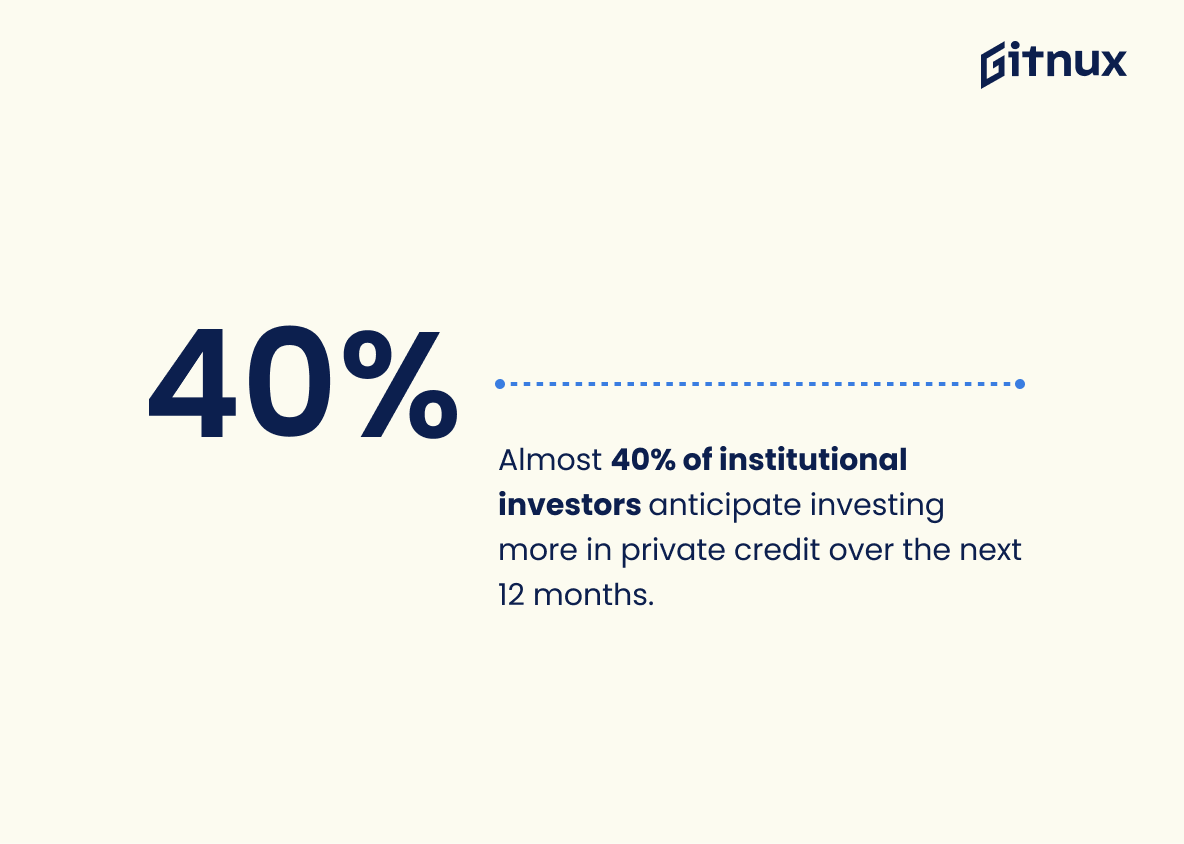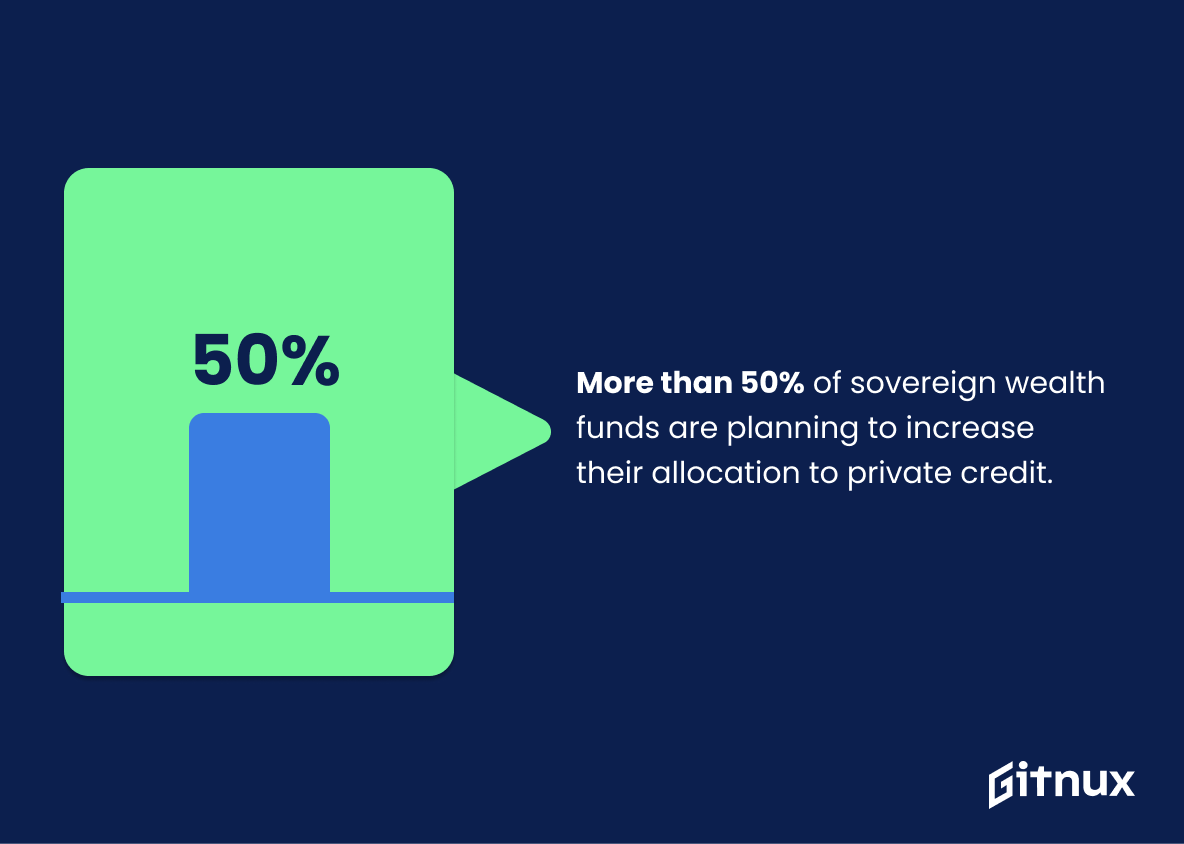In the vast, perplexing world of finance, private credit stands as a beacon for those seeking fluctuation-resistant investment strategies. A rapidly growing component of the broader private capital market, the private credit industry offers unique opportunities and challenges for both lenders and borrowers.
In this blog post, we shall excavate beneath the numbers to provide in-depth analysis and valuable insights into the latest trends and statistics of the private credit industry. So whether you’re a seasoned investor, a budding entrepreneur, or simply a curious mind, gear up to embark on an enlightening journey across the gripping terrain of private credit industry statistics.
The Latest Private Credit Industry Statistics Unveiled
The total global private credit market stands at a staggering $848 billion as of end-2020.
Radically underscoring the global influence of the private credit industry, a colossal figure of $848 billion as of end-2020 directs our attention towards the sheer power and reach of this sector. An ocean of opportunities rippling through the globe, its staggering growth presents an undeniable proof of momentum in this sector. This titanic figure is not just a number but a reflection of the colossal faith that global investors place in this sphere, quantifying the immense growth and popularity that the private credit markets have enjoyed in recent years.
It provides a solid foundation upon which discussions in the blog about market trends, investment opportunities, and emerging patterns within the private credit industry can be robustly built. Providing such a robust perspective, this statistic stands as a towering beacon in our exploration of the thriving private credit industry.
Direct lending accounts for 31% of the private credit market.
Peeling back the layers of the private credit market, we discover an interesting revelation: Direct lending forms the lifeblood of nearly one-third of the private credit panorama. This nugget of information not only underscores the significance of direct lending, but also reveals the dynamic role it plays within the private credit industry.
Delving further into this raw statistic paints a picture of a thriving ecosystem where direct lenders and borrowers meet, transacting away from conventional banking systems. It whispers stories of entrepreneurs and lenders forging paths outside traditional banking systems, and speculators seizing new opportunities in a bid to diversify risk and stir up returns.
For anyone surveying the contours of the private credit landscape, such a statistic is a beacon of understanding. It frames direct lending as a force to be reckoned with – a significant component in the complex machinery of the private credit market. This leads to broader discussions on risk management, returns, and an array of burgeoning opportunities within the credit space. The next time you find yourself exploring the intricate web of private credit industry, remember to acknowledge the commanding presence of direct lending as its key linchpin.
In 2020, real assets finance strategies made up 21% of private credit fundraising.
The recorded 21% stake of real assets finance strategies in private credit fundraising in 2020 forms an intriguing pulse in the private credit industry narrative. It not only injects substantive weight to the industry’s financial dynamics but also echoes the pivotal role these strategies play in shaping its operational and financial landscape.
This statistic, wrapped in vogue, potentially highlights an emerging trend, enabling private credit investors to measure the market breadth and adjust their portfolio strategies accordingly. It provides discerning insights on a growing investment focus, painting a picture of an evolving industry bristling with opportunities for both borrowers and lenders.
There’s a profound link, an invisible thread if you will, connecting this statistic to the larger web of private credit industry dynamics. This puts a magnifying glass to the heart of these often overlooked real asset financing strategies, revealing their potency as well as the momentum they carry into the subsequent year. As such, readers are offered a contemporary perspective, enhancing their understanding of the current and future trends in the private credit industry.
Mezzanine funds garnered 17% of the total equity capital for the first quarter 2021.
The vitality of the statistic – ‘mezzanine funds engrossed 17% of the total equity capital for the first quarter of 2021’- is braided inextricably with the pulse of the Private Credit Industry. It sheds light on the evolving trends in the industry, drawing attention to the rise of mezzanine funding as a preferred investment vehicle. Spanning across the spectrum of funding options, mezzanine funds have carved a significant niche for themselves, emerging as a substantial contributor to the industry’s equity capital.
This suggests that investors are increasingly rallying towards the potentially higher returns of subordinated debt, despite the higher risk. In essence, this percentage is not merely a statistic, but a testament to the shifting investor preferences and burgeoning growth opportunities within the private credit industry.
The distressed debt segment in the Private Credit sector grew by 51% in Q3 2020.
The prodigious 51% surge in the distressed debt segment in the private credit sector during Q3 2020 weaves its own unique narrative. It not only underscores the high volatility and potential opportunities within the sector but also indicates that investors are becoming increasingly interested in this riskier asset class.
Presenting such quantitative insights delivers a deep-dive exploration into the evolving dynamics of the private credit industry. Tailoring investment strategies to these trends could potentially yield substantial gains for industry insiders, making this statistic an integral cornerstone of any discussion around private credit industry statistics.
By May 2021, the cumulative year-to-date total for private credit deals in the U.S. was $80.3 billion.
Highlighting the statistic ‘By May 2021, the cumulative year-to-date total for private credit deals in the U.S. was $80.3 billion.’ places a vibrant spotlight on the thriving tempo of the private credit industry. It acts as a compelling testament to the palpable pace this landscape packs and a barometer of economic trajectory.
The robustness of this numerical figure sends ripples of inference about the health and dynamism of the market, providing an indispensable cornerstone for comprehensive understanding. In the theater of private credit, such hefty figures help set the stage for readers to comprehend its current magnitude, growth potential, and underlying trends.
Global Private Credit risk-adjusted returns in 2020 was around 9.5%.
Highlighting the figure of ‘Global Private Credit risk-adjusted returns in 2020 being around 9.5%’ provides a striking testament to the resilience and potential profitability of the private credit industry, even in a year marked by economic uncertainty due to the pandemic.
It underscores the investment attractiveness of private credit, showcasing its capacity to deliver robust returns, when adjusted for risk, amidst unfavorable market conditions. This is an indispensable component of any discourse on private credit industry statistics, giving readers a vital measure of the industry’s performance and inherent potential for wealth creation.
Almost 40% of institutional investors anticipate investing more in private credit over the next 12 months.
Highlighting the statistic that nearly 40% of institutional investors envisage increasing their commitment to private credit over the forthcoming year underscores a growing confidence in and demand for the private credit industry. This anticipated upswing in investment is suggestive of a robust health within this sector, reflecting positively on its potential growth, yield, and stability.
This projection not only reveals a significant trend but also serves as an encouraging signal for potential investors keen to stay ahead of market developments in the private credit industry. In the context of a blog post about Private Credit Industry Statistics, this statistic wields immense value, directing attention to an unfolding development that could reshape the investment landscape.
More than 50% of sovereign wealth funds are planning to increase their allocation to private credit.
In the swirl of numbers, percentages and data surrounding the Private Credit Industry, one statistic stands as a beacon, pointing the way towards further growth and opportunity. Think about it, more than half of all sovereign wealth funds are on a path to boost their stake in private credits. This isn’t just another data point; it’s a testament to the escalating interest and trust these significant global investors show in this industry.
Reflecting how compelling the potential rewards of the industry are, it drives home the strength and solidity of the private credit market as its appeal extends beyond typical investors. This key statistic, in essence, forms a pillar supporting the overall narrative of private credit standing as an increasingly attractive asset class.
Conclusion
In conclusion, today’s rapidly evolving investment landscape undoubtedly places the private credit industry as an indispensable player. The promising statistics show a significant growth trajectory for the sector across various geographies and asset classes. Industry trends reflect a robust demand for alternative investments, indicating potential for even greater expansion in the future.
Therefore, investors seeking diversification and higher yields, along with companies looking for alternative funding routes, will likely find the private credit industry increasingly relevant. With its evolving dynamics, the private credit industry is poised to reshape the world of finance. As we continue to monitor these statistics, one can’t help but recognize the potential and exciting opportunities this industry offers.
References
0. – https://www.www.institutionalassetmanager.co.uk
1. – https://www.www.financierworldwide.com
2. – https://www.www.pionline.com
3. – https://www.www.savillsim.com
4. – https://www.www.preqin.com
5. – https://www.citywireselector.com
6. – https://www.www.privateequityinternational.com
7. – https://www.www.valuewalk.com
